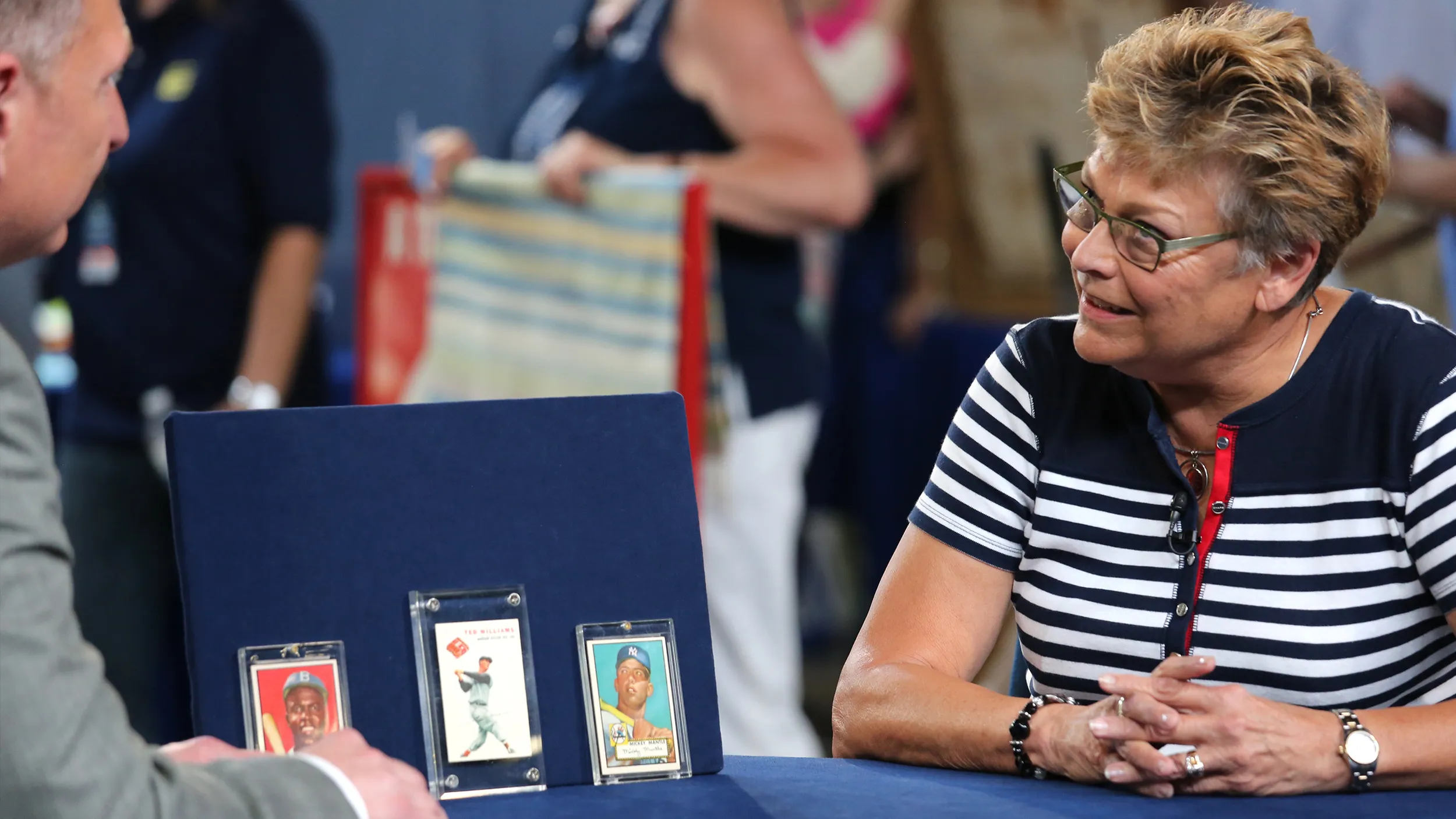GUEST: My recollection is being about ten years old and getting a crate delivered to our house, and this table was in it, and it was shipped from my grandmother to my mother. It's a Matthew Egerton table, I believe.
APPRAISER: Okay.
GUEST: Not sure if that's Senior or Junior.
APPRAISER: Okay.
GUEST: The story is that this was handed down to all the Elizabeths in the family, so it started with my great-great-great-grandmother.
APPRAISER: And she lived when and where?
GUEST: Most of my family is in the East Coast. I believe they were all in Staten Island area. And it was actually her mother that gave this to her. She would have been in the early 1800s.
APPRAISER: Your guess about it being a Matthew Egerton table is spot-on.
GUEST: Okay.
APPRAISER: It wasn't until I pulled out the drawer that I realized that it's a Matthew Egerton table from New Brunswick, New Jersey.
GUEST: Right.
APPRAISER: It happens to be Matthew Egerton, Jr. He flourished from 1785 to 1836.
GUEST: Okay.
APPRAISER: So you said this was about 1830 in your family, maybe?
GUEST: Well, they got married in 1828, I believe.
APPRAISER: Okay. So in the spectrum of hand-made furniture, the Industrial Age starts around 1830. This is getting up toward that era. So that's the end of the Federal period. So if we were to ascribe a catalogue description to this, if it were in an auction or a museum exhibition...
GUEST: Okay.
APPRAISER: we would call it a Federal, a highly figured maple two-drawer stand.
GUEST: Okay.
APPRAISER: Circa 1820 to 1830. Let's take a look at the label.
GUEST: Sure.
APPRAISER: It's here, inside the drawer. It's off-center because of the way the drawer's divided.
GUEST: Right.
APPRAISER: But he's not being bashful about putting his label in here.
GUEST: Right.
APPRAISER: This is huge. And it says, very boldly, "Matthew Egerton."
GUEST: Right.
APPRAISER: "New Brunswick," and then in parentheses it says, "N.J.," which is pretty cool. The way that we know the label is right is that you can see traces of the edge of the original label before it started flaking.
GUEST: Okay, okay.
APPRAISER: And that gives us great confidence to know that the discoloration of the wood occurred outside the label because the wood under the label was protected.
GUEST: Okay.
APPRAISER: So it doesn't have the same color shift.
GUEST: Sure.
APPRAISER: That's good because we know it's right. Adding a label to a piece of furniture was an easy way to enhance the value of something...
GUEST: Okay.
APPRAISER: after the fact. The condition speaks for itself. When you see the top, it's got some losses to the veneers.
GUEST: Right.
APPRAISER: It's got some rippling and cracking to the veneers. All good signs of age. Even the front leg has warped a little bit.
GUEST: Yeah.
APPRAISER: And it sort of kicks out to the side. That's not the kind of thing I would fix. I would leave it just like that.
GUEST: Sure.
APPRAISER: Because it speaks volumes about its age and authenticity. If it didn't have the label, it would be a nice maple table.
GUEST: Okay.
APPRAISER: The label really makes the difference here. Retail, you're probably looking at $5,500.
GUEST: Seriously?
APPRAISER: Seriously.
GUEST: Wow. When it was shipped, it was appraised, and I believe the appraisal at that point was $650.
APPRAISER: $650.
GUEST: That would have been in 1970... 5-ish?



